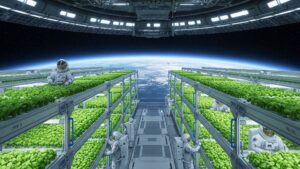subsidies and freebies: hinder efficiency and innovation
The Union Budget 2025 is set to significantly boost allocations for subsidies and freebies, with the goal of enhancing economic growth and supporting various segments of society. However, this approach brings a complex mix of advantages and challenges for India’s economic environment.
Proposed Increases in Subsidies
The government intends to increase spending on food, fertilizer, and cooking gas subsidies by 8%, bringing the total to around $47.41 billion for the next fiscal year. This includes a 5% rise in the food subsidy, which will reach nearly ₹2.15 trillion, largely due to higher costs associated with rice procurement and storage. Furthermore, the budget for cooking gas subsidies is projected to more than double to about ₹250 billion, while the fertilizer subsidy is expected to remain stable at ₹1.7 trillion.
In the agricultural sector, funding is anticipated to rise by approximately 15% to $20 billion, marking the largest increase in over six years. This investment aims to boost rural incomes and manage inflation through initiatives like developing high-yield seed varieties, enhancing storage and supply infrastructure, and increasing the production of pulses, oilseeds, vegetables, and dairy products.
Economic Implications
While these subsidies aim to assist vulnerable groups and stimulate economic activity, they also raise questions about fiscal sustainability. Increased subsidy spending can put pressure on government finances, potentially leading to larger fiscal deficits. This situation might require more borrowing, which could limit private investment and push interest rates higher.
Additionally, a heavy reliance on subsidies and freebies can sometimes hinder efficiency and innovation, as sectors may become overly dependent on government assistance instead of striving for productivity gains. It is essential to strike a balance between providing immediate economic support and implementing long-term strategies that encourage self-sufficiency and competitiveness.
Impact on Economic Growth
In the short term, raising subsidies can enhance consumption by improving the purchasing power of lower-income households, which in turn stimulates demand for goods and services. This increase in demand can result in higher production levels and potentially create more job opportunities.
However, if not handled carefully, sustained high levels of subsidy spending can lead to macroeconomic imbalances. For example, large fiscal deficits might erode investor confidence, negatively impact the country’s credit rating, and trigger inflationary pressures. It is crucial to ensure that subsidy programs are well-targeted, efficient, and paired with structural reforms that boost productivity and growth.
Conclusion
The Union Budget 2025’s focus on increasing subsidies demonstrates the government’s dedication to supporting various sectors and fostering inclusive growth. While these initiatives can offer immediate economic relief and stimulation, it is vital to consider their long-term effects on fiscal health and economic efficiency. A balanced strategy that integrates targeted subsidies with structural reforms and responsible fiscal management will be essential for achieving sustainable economic growth in India.
Share this content:














Post Comment